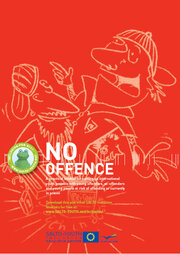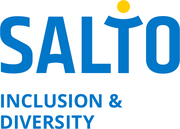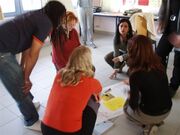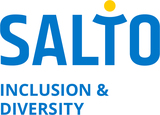Who are we talking about?
Young people with fewer opportunities...
The definition of young people with fewer opportunities is very broad - on purpose. The realities of the different countries around Europe (and sometimes of regions within these countries) is too diverse to have a very specific definition. e.g. a 'poor' person in Scandinavia might be considered 'rich' in Eastern Europe, a gay person in Cologne probably faces less discrimination than in a small countryside village in the Balkans, and so on.
That's why within the European Youth in Action programme the target group is defined by the obstacles they face. The term "fewer opportunities" means that certain young people have fewer possibilities than their peers. This can be for a variety of reasons:
- Social obstacles: young people facing discrimination (because of gender, ethnicity, religion, sexual orientation, disability, etc.), young people with limited social skills or anti-social or risky sexual behaviours, young people in a precarious situation, (ex ) offenders, (ex ) drug addicts, young and/or single parents, orphans, young people from broken families, etc.
- Economic obstacles: young people with a low standard of living, low income, dependence on social welfare system, long-term unemployed youth, homeless young people, young people in debt or in financial problems, etc.
- Disability: young people with mental (intellectual, cognitive, learning), physical, sensory or other disabilities.
- Educational difficulties: young people with learning difficulties, early school-leavers and school dropouts, lowly or non-qualified persons, young people that didn't find their way in the school system, young people with poor school performance because of a different cultural/linguistic background, etc.
- Cultural differences: young immigrants or refugees or descendants from immigrant or refugee families, young people belonging to a national or ethnic minority, young people with linguistic adaptation and cultural inclusion problems, etc.
- Health problems: young people with chronic health problems, severe illnesses or psychiatric conditions, young people with mental health problems, etc.
- Geographical obstacles: young people from remote, rural or hilly areas, young people living on small islands or peripheral regions, young people from urban problem zones, young people from less serviced areas (limited public transport, poor facilities, abandoned villages...), etc.
Young people with fewer opportunities are young people who, largely due to their personal situation and sometimes also due to the choices they make, face different and/or more difficult obstacles in their lives than other young people.
In many cases, individuals may fit into several of the categories described above at the same time (e.g. a teenage mother who lives in a remote village and who suffers from alcoholism). This compounds their difficulties still further.
Obviously, an individual should not automatically be included in the "fewer-opportunity" group simply on the basis of one or two characteristics. For instance it would be a mistake to include a young people in the fewer-opportunity group just because they come from an immigrant background. Similarly, it is incorrect to presume all single parents or all young people with disabilities automatically have fewer opportunities.
- More info on Young People with Fewer Opportunities and the Inclusion Strategy of the European Youth in Action programme at www.SALTO-YOUTH.net/InclusionStrategy/
Although the examples given here are just the tip of the iceberg, they do show the complex nature of the difficulties facing young people belonging to this specific group of fewer opportunities.
^^ top ^^
What about (ex-) offenders or those at risk of offending?
When we talk about young offenders or youth at risk of offending, we are on the whole talking about a group of young people on the outskirts of mainstream society. Those not enjoying the accepted normal life experiences of their peers. They may have chosen a different life through the friendships they have built and experiences they have bought into or may have had little support to choose a different lifestyle.
- Interestingly when you type Youth Inclusion into a web browser the predominant sites you are led to, all relate to social inclusion & crime reduction, describing how crime figures reduce as young people become more 'included in society'.
There is great importance in promoting inclusion in society for this target group, young people committing crime, on the verge of it or who have a history of committing crime have often got into a situation they feel they cannot get out of. They are often excluded from 'mainstream society' by their own doing, but if and when they wish to re-enter this accepted society, this can be much more difficult, than when they made their exit!
- They now have negative stereotypes attached to them,
- they have made poor friendship choices and have little social or family support to re-engage with positive activities.
Many of this target group do not know what support networks are available to them, and they would almost certainly be unaware of opportunities available through the Youth in Action programme for example. These areas of education and support may very well be where our job as professional youth worker comes in - to offer knowledge of such programmes which can include such a target group, then to provide the necessary support to engage. Hopefully leading these young people one step closer to inclusion.
Exercise - The Young People in Your Context
"Fewer-opportunities, (ex-) offenders, ..." is the term used here to describe a specific group of young people. Others call this group by other names - "disadvantaged youth", "young people at risk" or "young people at risk of offending", ...
You can do this exercise with the young people you work with, with colleagues, or maybe even together with the members of the board in your organisation or institution.
Needed materials are a big pieces of paper, pens, post-its.
- What terms are used in your context or in your language to describe these young people?
Method: put a big piece of paper and hang it to the wall. Give everybody some post-its to write the descriptions on. Hang them on the piece of paper, summarize them and discuss this with the group: What kind of messages do these titles communicate about the young people? - What are the most important issues or obstacles facing these young people
a. In your town?
b. In your region?
c. In your country?
Method: draw a vendiagram (partly overlapping circles) on a big piece of paper. Every circle has a theme: one is for your town, the second one is for the region, the third one is for the county. Use pens with different colours and let everybody write down their obstacles on the big paper in the vendiagram. When everybody is finished, you can describe and summarize what is written, discuss this with the group and draw some conclusions.
^^ top ^^
Inclusion - What are we talking about?
Inclusion! This is a very common buzz word used in every day work with this target group. It has in many circles of society (particularly those aspiring to political correctness) replaced the word exclusion which was in recent years the typical terminology, with phrases such as; socially excluded, at risk of exclusion, school exclusion etc. It was felt by many that this word gave negative connotations and that we should rephrase these terms, emphasising inclusion, but,... inclusion in what?
Helping young people in this target group to overcome their obstacles, empower themselves and become included in society at large is a part of the process of "social inclusion".
- Social inclusion involves providing opportunities for those members of society who do not enjoy the same level of privilege as others and striving to ensure that all aspects of society are "open to all".
Social inclusion is difficult to quantify. How can it be said with certainty that someone has been "included" and what is such a conclusion based on? We are often lead to expect that inclusion should be a big achievement - a kind of "hallelujah" moment where all problems are solved and the individual lives happily ever after. Professionals working with fewer-opportunity young people know that inclusion, especially in the early phases, can take much simpler forms and is an ongoing process.
Young persons can be said to be "included" when they...
- smile - take their own initiative
- voluntarily take part in an activity - make friends
- can concentrate on a task - are accepted by the rest of the group
- observe the rules - show up on time
- ask for help - help or praise another young people
- contribute to a discussion - are not afraid of physical contact
- show patience - are happy
Some of these examples may appear to be "small" or insignificant achievements, but it should be remembered that achievements which are easy for so-called "regular" young people can be major accomplishments for young people from the fewer-opportunity group.
Having said that, another interesting aspect is to look at inclusion as a process rather than a goal in itself which obviously adds new ambitions and through that also challenges to this kind of work.
Exercise - Inclusion
- Discussions around young people from an offending background often speak of the need to "include" this target group in society. What precisely does this mean? Consider the following questions:
1A. Inclusion... in WHAT?
1B. Inclusion... WHY?
1C. Within the inclusion process... WHO includes WHO? - Within your specific context, think of ways that you could recognize whether or not a young person is "included" (for example in a group, in a team, in school, among their peers, etc.)
List five concrete indicators that show you when a young person is successfully included.
^^ top ^^
 www.salto-youth.net/
www.salto-youth.net/
NoOffence/

 Protected from exclusion
Protected from exclusion
Downloads
The following downloads are available:
- No Offence - projects with (ex) offenders - 2010 update
How to organise (international) youth projects with young offenders, ex-offenders and young people at risk of offending or currently in prison - despite some limitations. Based on SALTO TC No Offence 2006.
